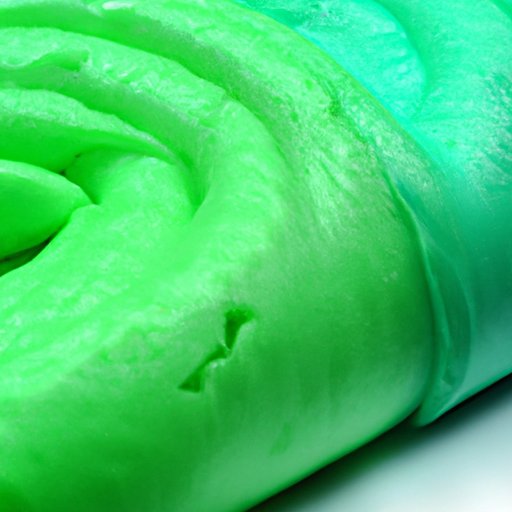Introduction
Slime has become one of the most popular toys in recent years, with countless YouTube videos and social media posts showcasing the fun and creativity that can be had with this slimy substance. But how does slime work? In this article, we aim to provide a comprehensive guide to the science behind slime, the ingredients that create its unique properties, and the benefits and concerns associated with this trending toy.
The Science Behind Slime: Understanding the Chemical Reactions and Physical Properties at Work
Before diving into the ingredients that make up slime, it’s important to understand the science behind it. At its core, slime is a non-Newtonian fluid, meaning that its viscosity and elasticity vary based on the amount of force applied to it. Slime’s unique properties are created by polymers and cross-linking. Polymers are long, chain-like molecules that can tangle with each other, creating a tangled web that makes up slime’s structure. Cross-linking is what gives slime its stretchiness and allows it to hold its shape.
From Borax to Glue: A Comprehensive Guide to the Ingredients in Slime and How They Interact
Slime can be made from a variety of ingredients, but the most common are glue, Borax, and saline solution. Each of these ingredients has specific properties and interacts with each other in different ways to create different types of slime. For example, Borax acts as a cross-linking agent, binding the polymer chains to create a stable slime structure. Saline solution serves a similar purpose to Borax, but it’s often preferred for its safety and accessibility. Glue, on the other hand, is what creates the polymer chains in slime and can be substituted with other polymer-based substances like laundry detergent or cornstarch.
Why do Kids Love Slime? The Psychology and Sensory Benefits of Playing with this Ooey-Gooey Substance
Playing with slime can provide multiple sensory benefits, such as stress relief and regulating emotions. The tactile experience of slime can be incredibly soothing, providing a calming sensation that helps to ground individuals and decrease anxiety levels. Slime can also be used in sensory play, helping children develop their fine motor skills, creativity, and imagination.
Slime Making 101: Step-by-Step Instructions to Create Your Own Slime and Experiment with Different Consistencies and Textures
Creating your own slime can be a fun and easy process. To begin, you’ll need a few key ingredients and materials, such as glue, Borax or saline solution, and bowls and spoons. From there, you can experiment with different consistencies and textures by changing the ratios of your ingredients or adding in fun elements like glitter or food coloring.
The Pros and Cons of Slime: Exploring the Environmental Impact and Safety Concerns of this Trending Toy
While slime-making is generally a safe and fun activity, there are environmental and safety concerns to consider. Many slime-making ingredients, such as Borax and glue, have a negative impact on the environment when disposed of incorrectly. Additionally, certain types of slime can pose safety risks, such as homemade slime that has not been properly formulated or contains unsafe ingredients. To enjoy slime-making safely and conscientiously, consider using eco-friendly ingredients and ensuring proper disposal practices.
Conclusion
Slime is a fun and creative toy that has captured the hearts of many, but it’s important to understand how it works and how to use it safely. By exploring the science behind slime, the ingredients that make it up, and the benefits and risks associated with it, we hope to provide a comprehensive guide to enjoying this trending toy. Whether you’re a longtime slime enthusiast or a curious newcomer, we recommend giving it a try and experimenting with different textures and colors.
(Note: Is this article not meeting your expectations? Do you have knowledge or insights to share? Unlock new opportunities and expand your reach by joining our authors team. Click Registration to join us and share your expertise with our readers.)
